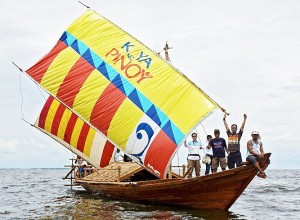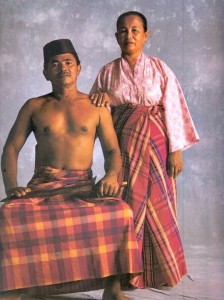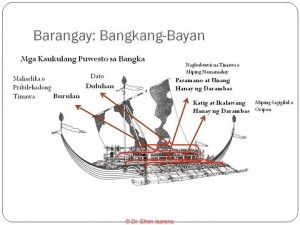
Watawat recalls the creation of the Philippine flag Also entered were actors James Blanco Carlos Morales and the appropriate-produced films. And not just ordinary this movie in terms of genre because it is a period movie titled Flag. Aside from being executive producers Carlos and James Flag, they also perform in the film as the Philippine national heroes. General Emilio Carlos plays Aguinaldao, while James also plays the role of Andres Bonifacio. From Ghalaxy Cinecilio Pictures and Film Productions, the film said the film debut of first-time director Dave Cecilio and two of them Deo Divinagracia the creation of stories. Features in this period film about the creation of the Philippine flag and how it became part of Philippine history. The other cast members of film were Chin-Chin Gutierrez, FAMAS awardee, Mercedes Cabral, Kisza Divinagracia. Those three women performing naghabi of the first flag of the Philippines. Among the cast as well as the flag were Monsour del Rosario, Justin Cuyugan, Mosang, Dan Fernnadez, Angie Ferro, Nathan Lopez, Maricar Madrid, Mara Lopez, Gigi Pirote, Dick Lindayag, Herminia Concpecion, and Fria Rivas. On December 12, 2009 had a trial screening at the University of the Philippines Baguio. Although the film is still raw pina preview it there, as requested. January 2010 now officially start actually present at screenings and walks of people in the movie production. Among the schools and universities is the Baguio Colleges Foundation, University of Baguio, UP Baguio, University of Cordillera, STI College, Colleges Data Center, St. Louis University, etc.. If you can not change the schedule, the target is screening this January 15-21 in Olongapo City area and also OCNHS Like the fourteen (14) public elementary and high schools in Sta.Rita and Subic, etc. Theater SUMVAC held it in Subic Freeport Zone. In February, it also targets to tour Bohol and Nueva Ecija, in March in Cebu and Davao and international screenings also plans soon. Synopsis: This is a journey in the past. The Flag (Flag) is pagsasapelikula a part in the history of the Philippines at the time made the symbol of freedom for the declaration of the First Republic the country. Symbol generated in an effort by Doña Marcela Agoncillo (Chin Chin Gutierrez) based on the request of General Emilio Aguinaldo (Carlos Morales) to create colors. They did it while they live in Hong Kong was caused by the occupation of Spain. There are five days Mrs. Marcela hinahabi also the standard, a partner with his son Enchang (Kisza Divinagracia) and Delfina Natividad (Mercedes Cabral). Obrang generated here represent a shape, color, and the image of courage and truth behind the efforts to achieve a desired freedom. Source of multicolor colors. Red, blue, black white and yellow. Taut the outbreak of the Association was against the repressive foreigners. Became the leader of the revolt were Dagohoy and Diego Silang until developed by Andres Bonifacio (James Blanco) the Katipunan. Also resulted in agreement by Aguinaldo Pakto of Biak-na-Bato the revolution. The eight rays of the sun in eight provinces also felt the first revolt. In Kawit, Cavite on June 12, 1898 was a historic wave of the official flag of the First Republic. This occurred in the middle window of the home of General Aguinaldo. It became the day of full independence. But more followed this revolution against the Spaniards, Americans and other war since switching Dr. Jose Rizal and the Supremo. Many of the historical truth and reveal it tumutulay present. Mute-witness piece of cloth on real events and was even now. Thy banner will continue to shine while gentle people continued to acknowledge its importance. Production staff: Story by Deo Divinagracia and Dave Cecilio Director of Photography: Marvin Reyes Music by Miguel Cortez Wild Sound Sound by AMI Edited by Thop Nazarene, wardrobe by Ronnie Martinez Assistant Directors were Danseco Cicero, Deo Divinagracia, Edmund Mijares, Alex Brin, Ricci Rono, and Carlos Morales. Production Manager: Christopher Manabal, Assistant Production Managers: Kemuel Nini Santos Cruz Executive Producers: Carlos Morales and James Blanco DIRECTOR'S PROFILE: The Director Dave Cecilio was born in Paranas, Samar on March 6, 1972. Native of Bacoor, Cavite City, he was a child and Nora by Cecilio Cecilio Domingo. Among his professional qualifications are as follows: Filmmaker and Writer at the International Academy of Film & Television, Big Foot Entertainment, Hollywood Boulevard (Mactan Lapu-lapu City, Cebu). He was also a TV commercial director, worked at the International Institute for Film & Arts (IIFA) in Makati City. He was also a registered nurse, became a product specialist, former teacher and professioanal medical representative, gained him many kunsaan honor in this field. Among its basic video editing … [Read more...]





















